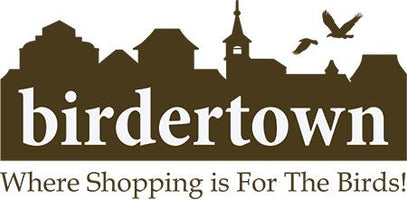
How to care for and clean your bird feeder
We love watching our feathered friends dine on bird feeders around the backyard. However, bird watching also requires a bit of effort to ensure that you take care of these visitors. Proper care and cleaning of feeders is important to ensure that they last a long time, continue to attract birds, and don’t accidentally make birds sick. With this in mind, let’s take a look at how to clean your bird feeder.
Consider Easy to Clean Bird Feeders
There are many different types of bird feeders available. In fact, you may have several depending on your options for hanging them and the types of birds you want to attract. If you are someone that doesn’t have much time for cleaning, you may want to opt for one that is easier to clean.
Tube bird feeders are among the easiest to clean due to their design. You typically just need a brush and some warm water. You can easily clean a tube feeder in only a few minutes and restock it with birdseed.

Clean Bird Feeders at Appropriate Intervals
How often you need to clean your feeder depends on its type and usage. As a general rule, you should clean all feeders at least once a month. However, if a feeder is extremely popular or there is a lot of rain, you will want to clean it much more often. Wet bird seed tends to get moldy and when that happens you should empty the feeder and clean it.
The rules are a bit different when dealing with hummingbird feeders and oriole feeders. For these types of specialized feeders, you will want to clean them every time the food is changed. Fortunately, the designs of these types usually make it very convenient to clean them.
Clean Below the Feeder as Well
If you are new to bird watching, you may not realize that cleaning underneath the feeder is something that you need to pay attention to as well. This is relatively easy to do. Simply use a shovel to clean up any seeds, hulls, or bird poop that has landed on the ground.
This is important to do for a couple of reasons. First, if left to sit there, this can attract rodents and other pests to your yard. Additionally, if the food gets wet, it can get moldy and pose a sickness risk for any birds that may eat it.
Use Safe Cleaning Products
You don’t want to ingest chemicals and you want to make sure your birds don’t either. Thus, be sure to use the right types of products when cleaning your bird feeders. The most popular solution is to use a solution of one part bleach to nine parts water, which is great for sanitizing bird feeders.
If you don’t want to use a bleach solution, you can also find a number of commercial bird feeder cleaning solutions. Using proper cleaning products will ensure that you don’t accidentally make your birds sick.
Soaking Feeders Can Help
We all have times when we get a bit distracted with day-to-day life. Thus, if you haven’t cleaned your bird feeders in a while, you may need a bit of help. If you find that you have a particularly dirty bird feeder, use a large sink or washtub to submerge it and soak it for a bit before cleaning.
This is a great way to help loosen debris, which will make it much easier to clean your feeder. This can result in saving you time and some elbow grease. Of course, the best way to avoid feeders getting too dirty is to clean them often.
Consider a Safe Wood Sealer for Wooden Feeders
The easiest types of feeders to clean are those made with plastic, metal, and other non-wood substances. However, there is something about wooden bird feeders that looks perfect for a natural backyard. Wood feeders can be a bit more difficult to clean as they are water-soluble.
A good solution to this is to use a safe wood sealant like linseed oil every couple of years. This has a double benefit. Not only does it make your wooden bird feeder a bit easier to clean, it will also slow the weathering effect on the feeder, helping it maintain its look for a longer time.

Final Thoughts
As bird watchers, we love to see what visitors to our yard we get. However, many people do not know all the ins and outs when it comes to taking proper care of your feeders. Hopefully these tips have helped you to get a better sense of how to easily take care of your bird feeders.
Have other questions? Reach out to our birding experts, and we’ll help you get started!
